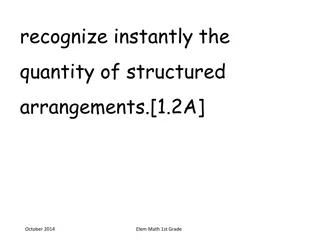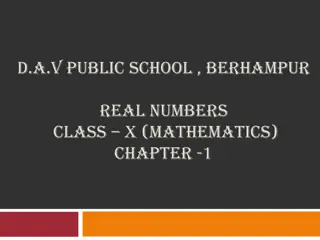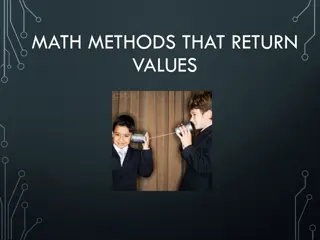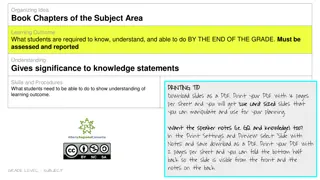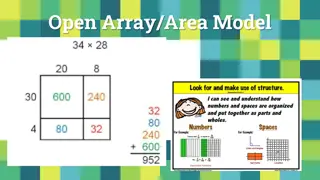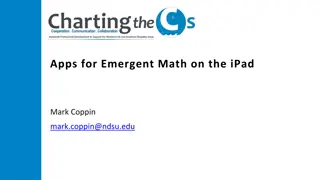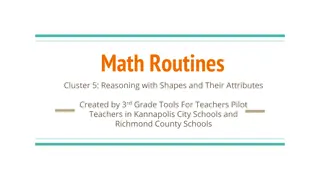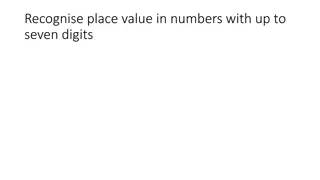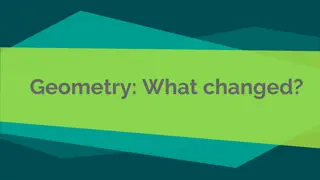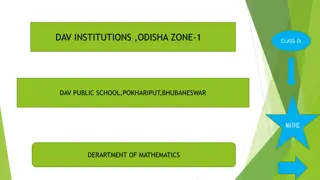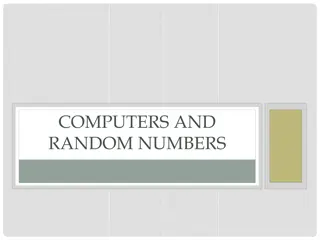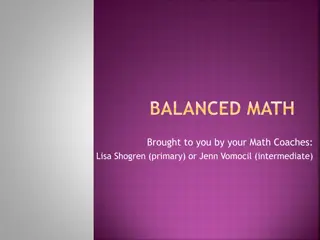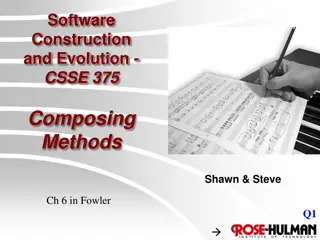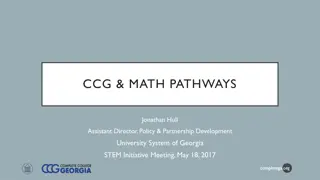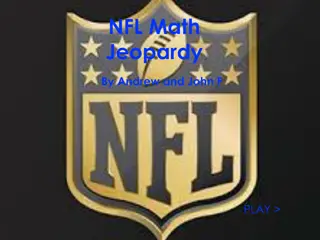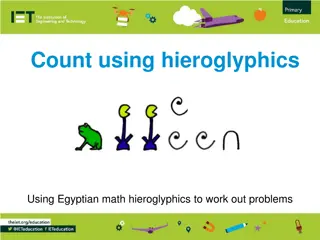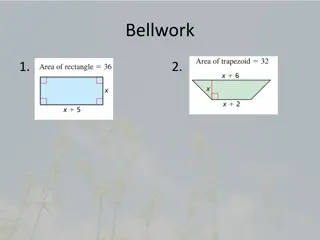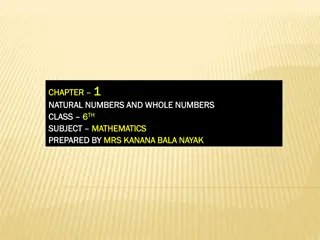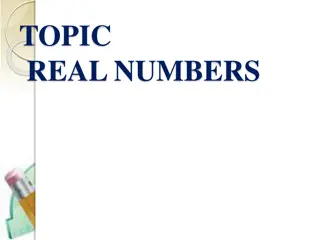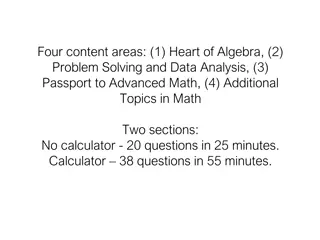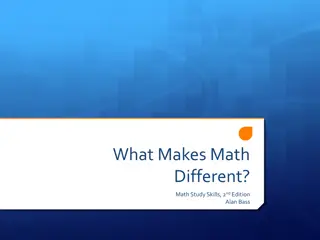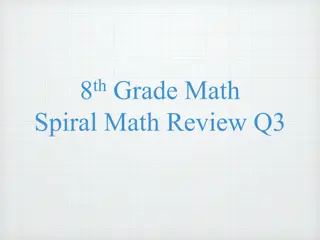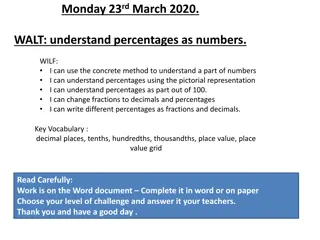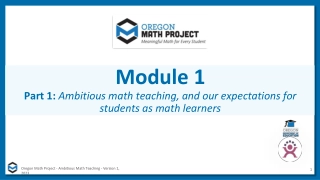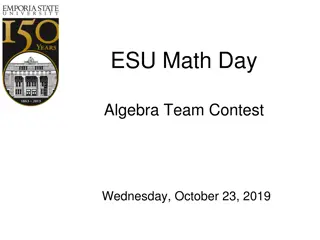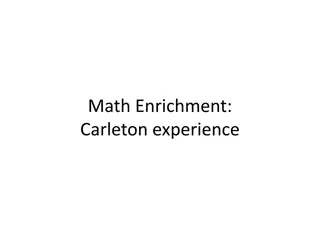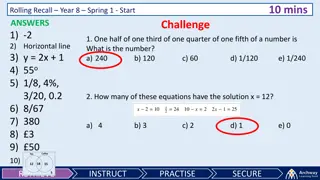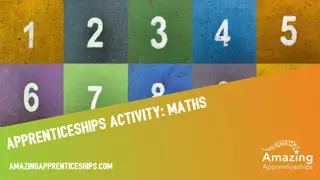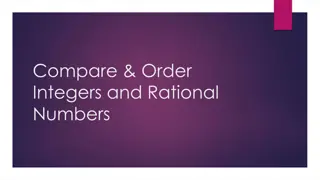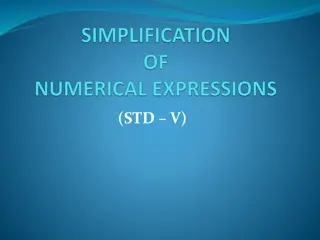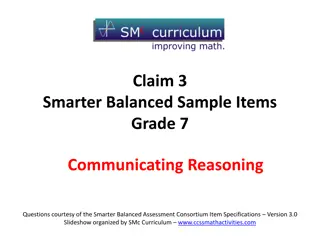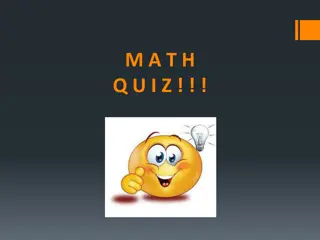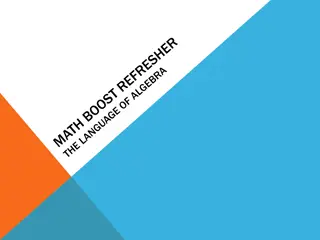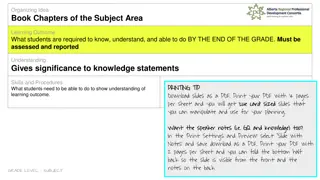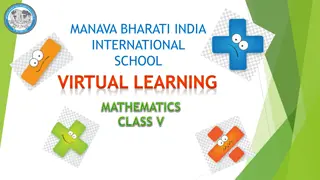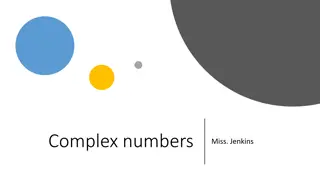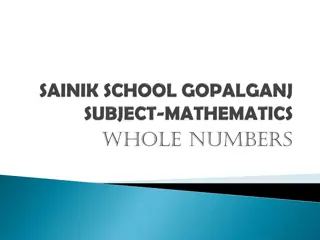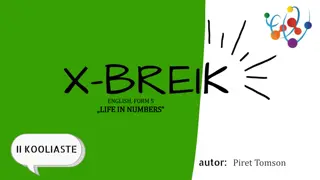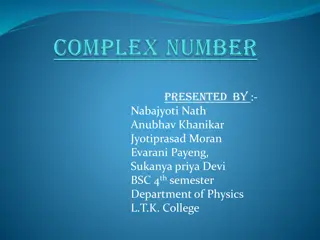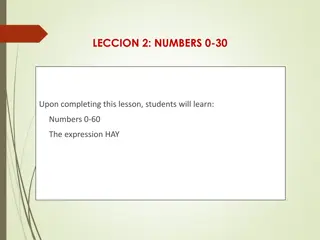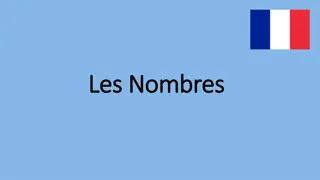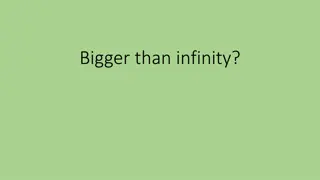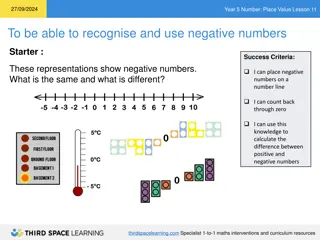Understanding Numbers: Composing and Decomposing in Math
Explore the world of numbers up to 100,000 by composing and decomposing them into ten thousands, thousands, hundreds, tens, and ones using various models and notations. Dive into the base-10 place value system, understand mathematical relationships, represent numbers on a number line, compare and order whole numbers, and work with fractions through concrete objects and models. Discover the significance of unit fractions and how to compose and decompose fractions effectively.
Download Presentation

Please find below an Image/Link to download the presentation.
The content on the website is provided AS IS for your information and personal use only. It may not be sold, licensed, or shared on other websites without obtaining consent from the author. Download presentation by click this link. If you encounter any issues during the download, it is possible that the publisher has removed the file from their server.
E N D
Presentation Transcript
compose and decompose numbers up to 100,000 as a sum of so many ten thousands, so many thousands, so many hundreds, so many tens, and so many ones using objects, pictorial models, and numbers, including expanded notation as appropriate.[3.2A] October 2014 Elem Math 3rd Grade
describe the mathematical relationships found in the base-10 place value system through the hundred thousands place.[3.2B] October 2014 Elem Math 3rd Grade
represent a number on a number line as being between two consecutive multiples of 10; 100; 1,000; or 10,000 and use words to describe relative size of numbers in order to round whole numbers.[3.2C] October 2014 Elem Math 3rd Grade
compare and order whole numbers up to 100,000 and represent comparisons using the symbols >, <, or =.[3.2D] October 2014 Elem Math 3rd Grade
represent fractions greater than zero and less than or equal to one with denominators of 2, 3, 4, 6, and 8 using concrete objects and pictorial models, including strip diagrams and number lines.[3.3A] October 2014 Elem Math 3rd Grade
determine the corresponding fraction greater than zero and less than or equal to one with denominators of 2, 3, 4, 6, and 8 given a specified point on a number line.[3.3B] October 2014 Elem Math 3rd Grade
explain that the unit fraction 1/b represents the quantity formed by one part of a whole that has been partitioned into b equal parts where b is a non- zero whole number.[3.3C] October 2014 Elem Math 3rd Grade
compose and decompose a fraction a /b with a numerator greater than zero and less than or equal to b as a sum of parts 1/b.[3.3D] October 2014 Elem Math 3rd Grade
solve problems involving partitioning an object or a set of objects among two or more recipients using pictorial representations of fractions with denominators of 2, 3, 4, 6, and 8.[3.3E] October 2014 Elem Math 3rd Grade
represent equivalent fractions with denominators of 2, 3, 4, 6, and 8 using a variety of objects and pictorial models, including number lines.[3.3F] October 2014 Elem Math 3rd Grade
explain that two fractions are equivalent if and only if they are both represented by the same point on the number line or represent the same portion of a same size whole for an area model.[3.3G] October 2014 Elem Math 3rd Grade
compare two fractions having the same numerator or denominator in problems by reasoning about their sizes and justifying the conclusion using symbols, words, objects, and pictorial models.[3.3H] October 2014 Elem Math 3rd Grade
solve with fluency one-step and two- step problems involving addition and subtraction within 1,000 using strategies based on place value, properties of operations, and the relationship between addition and subtraction.[3.4A] October 2014 Elem Math 3rd Grade
round to the nearest 10 or 100 or use compatible numbers to estimate solutions to addition and subtraction problems. [3.4B] October 2014 Elem Math 3rd Grade
determine the value of a collection of coins and bills. [3.4C] October 2014 Elem Math 3rd Grade
determine the total number of objects when equally-sized groups of objects are combined or arranged in arrays up to 10 by 10.[3.4D] October 2014 Elem Math 3rd Grade
represent multiplication facts by using a variety of approaches such as repeated addition, equal- sized groups, arrays, area models, equal jumps on a number line, and skip counting.[3.4E] October 2014 Elem Math 3rd Grade
recall facts to multiply up to 10 by 10 with automaticity and recall the corresponding division facts.[3.4F] October 2014 Elem Math 3rd Grade
use strategies and algorithms, including the standard algorithm, to multiply a two-digit number by a one-digit number. Strategies may include mental math, partial products, and the commutative, associative, and distributive properties.[3.4G] October 2014 Elem Math 3rd Grade
determine the number of objects in each group when a set of objects is partitioned into equal shares or a set of objects is shared equally.[3.4H] October 2014 Elem Math 3rd Grade
determine if a number is even or odd using divisibility rules. [3.4I] October 2014 Elem Math 3rd Grade
determine a quotient using the relationship between multiplication and division. [3.4J] October 2014 Elem Math 3rd Grade
solve one-step and two-step problems involving multiplication and division within 100 using strategies based on objects; pictorial models, including arrays, area models, and equal groups; properties of operations; or recall of facts.[3.4K] October 2014 Elem Math 3rd Grade
represent one- and two-step problems involving addition and subtraction of whole numbers to 1,000 using pictorial models, number lines, and equations.[3.5A] October 2014 Elem Math 3rd Grade
represent and solve one- and two-step multiplication and division problems within 100 using arrays, strip diagrams, and equations.[3.5B] October 2014 Elem Math 3rd Grade
describe a multiplication expression as a comparison such as 3 x 24 represents 3 times as much as 24.[3.5C] October 2014 Elem Math 3rd Grade
determine the unknown whole number in a multiplication or division equation relating three whole numbers when the unknown is either a missing factor or product.[3.5D] October 2014 Elem Math 3rd Grade
represent real-world relationships using number pairs in a table and verbal descriptions.[3.5E] October 2014 Elem Math 3rd Grade
classify and sort two- and three- dimensional figures, including cones, cylinders, spheres, triangular and rectangular prisms, and cubes, based on attributes using formal geometric language.[3.6A] October 2014 Elem Math 3rd Grade
use attributes to recognize rhombuses, parallelograms, trapezoids, rectangles, and squares as examples of quadrilaterals and draw examples of quadrilaterals that do not belong to any of these subcategories.[3.6B] October 2014 Elem Math 3rd Grade
determine the area of rectangles with whole number side lengths in problems using multiplication related to the number of rows times the number of unit squares in each row.[3.6C] October 2014 Elem Math 3rd Grade
decompose composite figures formed by rectangles into non- overlapping rectangles to determine the area of the original figure using the additive property of area.[3.6D] October 2014 Elem Math 3rd Grade
decompose two congruent two- dimensional figures into parts with equal areas and express the area of each part as a unit fraction of the whole and recognize that equal shares of identical wholes need not have the same shape.[3.6E] October 2014 Elem Math 3rd Grade
represent fractions of halves, fourths, and eighths as distances from zero on a number line.[3.7A] October 2014 Elem Math 3rd Grade
determine the perimeter of a polygon or a missing length when given perimeter and remaining side lengths in problems.[3.7B October 2014 Elem Math 3rd Grade
determine the solutions to problems involving addition and subtraction of time intervals in minutes using pictorial models or tools such as a 15-minute event plus a 30-minute event equals 45 minutes.[3.7C] October 2014 Elem Math 3rd Grade
determine when it is appropriate to use measurements of liquid volume (capacity) or weight.[3.7D] October 2014 Elem Math 3rd Grade
determine liquid volume (capacity) or weight using appropriate units and tools.[3.7E] October 2014 Elem Math 3rd Grade
summarize a data set with multiple categories using a frequency table, dot plot, pictograph, or bar graph with scaled intervals.[3.8A] October 2014 Elem Math 3rd Grade
solve one- and two-step problems using categorical data represented with a frequency table, dot plot, pictograph, or bar graph with scaled intervals.[3.8B] October 2014 Elem Math 3rd Grade
explain the connection between human capital/labor and income.[3.9A] October 2014 Elem Math 3rd Grade
describe the relationship between the availability or scarcity of resources and how that impacts cost.[3.9B] October 2014 Elem Math 3rd Grade
identify the costs and benefits of planned and unplanned spending decisions. [3.9C] October 2014 Elem Math 3rd Grade
explain that credit is used when wants or needs exceed the ability to pay and that it is the borrower's responsibility to pay it back to the lender, usually with interest.[3.9D] October 2014 Elem Math 3rd Grade
list reasons to save and explain the benefit of a savings plan, including for college.[3.9E] October 2014 Elem Math 3rd Grade
identify decisions involving income, spending, saving, credit, and charitable giving. [3.9F] October 2014 Elem Math 3rd Grade
interpret the value of each place-value position as 10 times the position to the right and as one-tenth of the value of the place to its left.[4.2A] October 2014 Elem Math 3rd Grade
represent the value of the digit in whole numbers through 1,000,000,000 and decimals to the hundredths using expanded notation and numerals.[4.2B] October 2014 Elem Math 3rd Grade
compare and order whole numbers to 1,000,000,000 and represent comparisons using the symbols >, <, or =. [4.2C] October 2014 Elem Math 3rd Grade
round whole numbers to a given place value through the hundred thousands place. [4.2D] October 2014 Elem Math 3rd Grade


